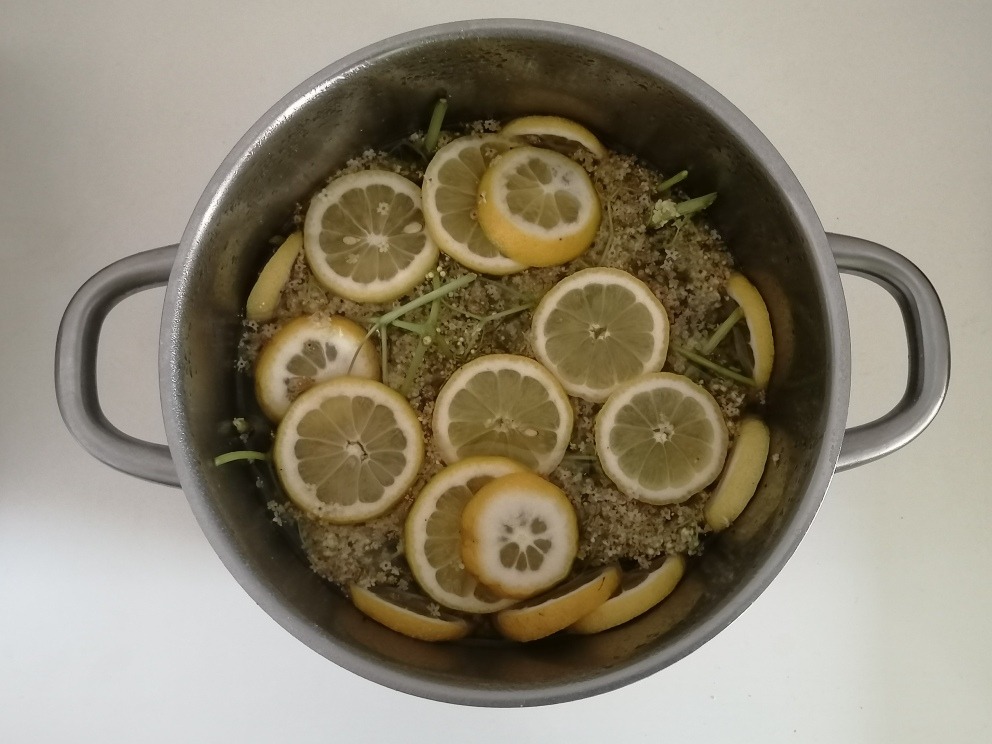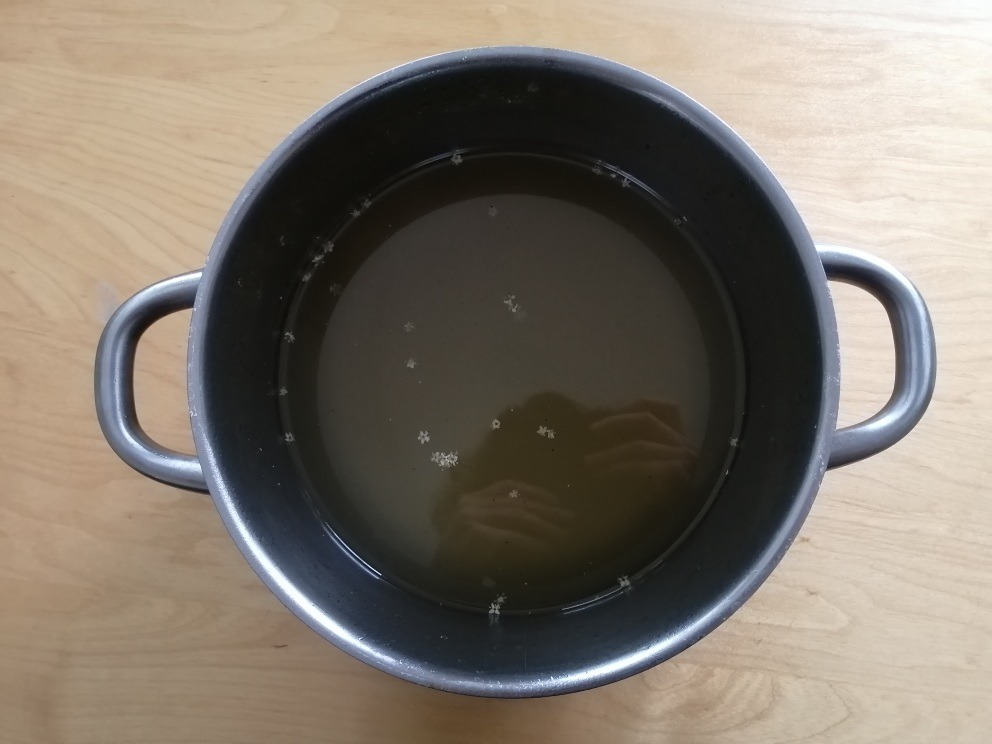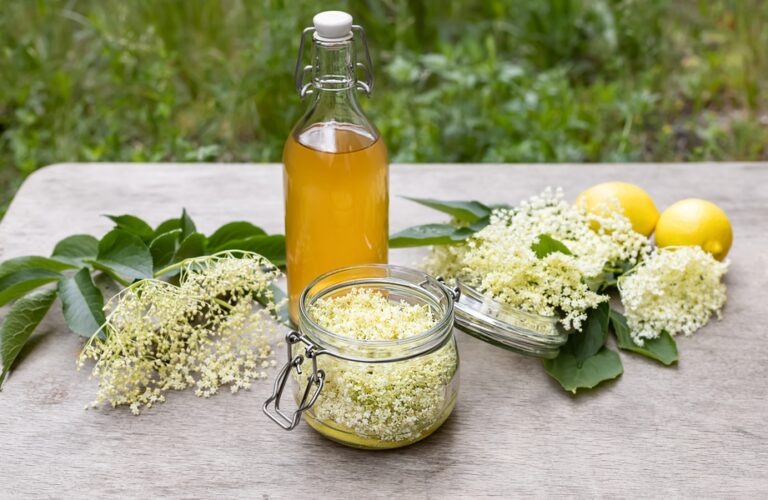No summer is complete without homemade elderflower cordial. Here’s my go-to recipe, plus foraging tips and suggestions for serving.
—–
For 1 litre of cordial
Ingredients:
- 20 sprays of elderflower blossoms – with any insects, caterpillars & co. removed/shaken off (don’t wash the flowers!)
- 750 g caster sugar
- 12.5 g citric acid powder concentrate (or 55ml of lemon juice)
- 1 lemon
Method:
- Put the water and the sugar in a large saucepan and slowly bring to the boil, stirring occasionally.
- Boil the water-sugar mixture briskly for 5 minutes.
- Remove the saucepan from the heat and add the citric acid concentrate/lemon juice.
- Allow the mixture to fully cool off. (This step is very important because putting the flowers in the hot solution will ruin the flavour. Remember: patience is a virtue!)
- Wash and dry the lemon and cut it into slices (0.5cm thick).
- Place the elderflower sprays in another large, clean saucepan and pour over the cool/lukewarm sugar solution. Add the lemon slices.
- Place a lid on the saucepan and leave the mix to infuse for 2-3 days.
–

–
- During infusion, stir the contents once or twice with a clean cooking spoon, making sure that the flowers and lemon slices are all in contact with (or submerged in) the sugar solution.
- When infusion is complete, remove the flowers and lemon slices from the syrup solution using a slotted spoon and discard. The remaining solution should now be a cloudy yellow.
–

–
- Filter the syrup using either a muslin cloth or a coffee filter. This can take a good while due to the sediment in the solution.
- The final syrup should be pale yellow and transparent. Pour into sterilised bottles and seal.
–
Stored in a cool, dark place, the homemade elderflower cordial should keep for 8-12 months.
Foraging tips:
- Even though you are going to shake off the elderflower sprays before preparing the syrup, you save a lot of time by checking the flowers for creepy crawlies, spiderwebs and other detritus before you pick them. Just collect the cleaner-looking blooms.
- Elderflowers are in bloom and can be harvested from around the end of May until mid-June.
- Unless you have an elderberry bush in your back garden, you might not have a lot of choice in the matter, but the flowers are best picked when it hasn’t rained for about 2 days prior.
- The afternoon is the best time to pick the flowers; they’d had chance to fully open up in the warmth of the sun.
Serving suggestions for homemade elederflower cordial
To be honest, my favourite way of drinking this homemade elderflower cordial is simply as an addition to soda water and ice – there is nothing better on a hot summer day. But there are so many other wonderful ways to use it. Here are two drinks that no Austrian summer is complete without!
Hugo
A refreshing alternative to the ubiquitous Aperol spritz.
- 1 lime
- 2cl homemade elderflower cordial
- 160ml dry white wine/prosecco
- 3-4 ice cubes
- Couple of fresh mint leaves
- Soda water to fill
Method:
- Cut the lime in two; slice one half, and squeeze the other half out.
- Pour about half of the lime juice into a red wine glass.
- Add 2-3 slices of lime, the mint leaves and the ice cubes.
- Pour in the wine/prosecco and fill the glass with soda to finish.
Kaiserspritzer
- 100ml white wine
- 100ml soda water
- 25ml homemade elderflower cordial
- 3-4 ice cubes
Method:
- First pour the soda water into a wine glass.
- Add the wine, elderflower syrup and the ice cubes to finish. Easy!
—–
I am a bit of a syrup fiend, and always have a bottle or two of homemade product in the fridge. Here are my recipes for simple lilac syrup and rosehip syrup.
If you’re more a jam person, this recipe for rhubarb and vanilla jam could float your boat.
Photo: JaneVershinin on Envato Elements
